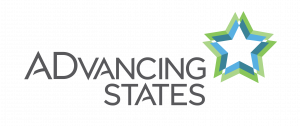
Needs, like major issues, will emerge from the internal and external scans. Needs focus specifically on deficiencies in the system: What is not working, or not working well? What services/choices/options are missing? Needs identification also seeks to spot problems at the consumer level, considering participants' unmet needs as well as the needs of consumer groups with limited access. People of varied backgrounds can face limited access.
Needs are also identified through consideration of performance data, including the results of program monitoring, performance on quality measures, regulatory actions and the findings of independent studies. The interplay between the internal and external assessments and the interplay among specific needs (e.g., the possible relationship between the lack of a particular service option and a population group that is facing limited access) may reveal additional needs that were not specifically identified earlier in the planning process.
Key Considerations
- Analysis of client data in the state's MIS, as well as the data collected through the internal and external assessment processes, may reveal previously unidentified relationships between specific needs and new needs may emerge.
- The needs of consumers and persons on waiting lists must be considered in planning.
- Needs that relate to issues beyond the direct control of the SUA (e.g., the need for better regulatory enforcement or the need to expand the number of waiver slots) should, nevertheless, be addressed in the state plan.
Questions Specific to This Decision Point
- What needs that emerged from the internal and external assessments should be addressed during the current planning cycle?
- What needs are the most important to address?
Who Participates?
- Representatives of all internal stakeholders
- Program participants
- SUAs
- AAAs
- Providers
- Advocates
- Tribal Organizations
The Work Group can be involved at different levels of decision-making:
- The Work Group could sift through the results of the internal and external assessments to identify and prioritize major issues.
- Staff could develop a "first cut" of the issues and present this preliminary list of major issues to the work group for their response. The Work Group could then be invited to finalize and prioritize the list of issues.
- Staff could develop a final list of issues to be addressed in the current planning cycle, and the Work Group could be invited to prioritize the issues to be addressed in the plan.
Key Decision Points
- Mission & Values
- Environmental Scanning
- Issues Identification
- Needs Identification
- Assets Identification
- Barriers Identification
- Goals & Objectives
- Outcomes & Performance Measurement
- The Plan

